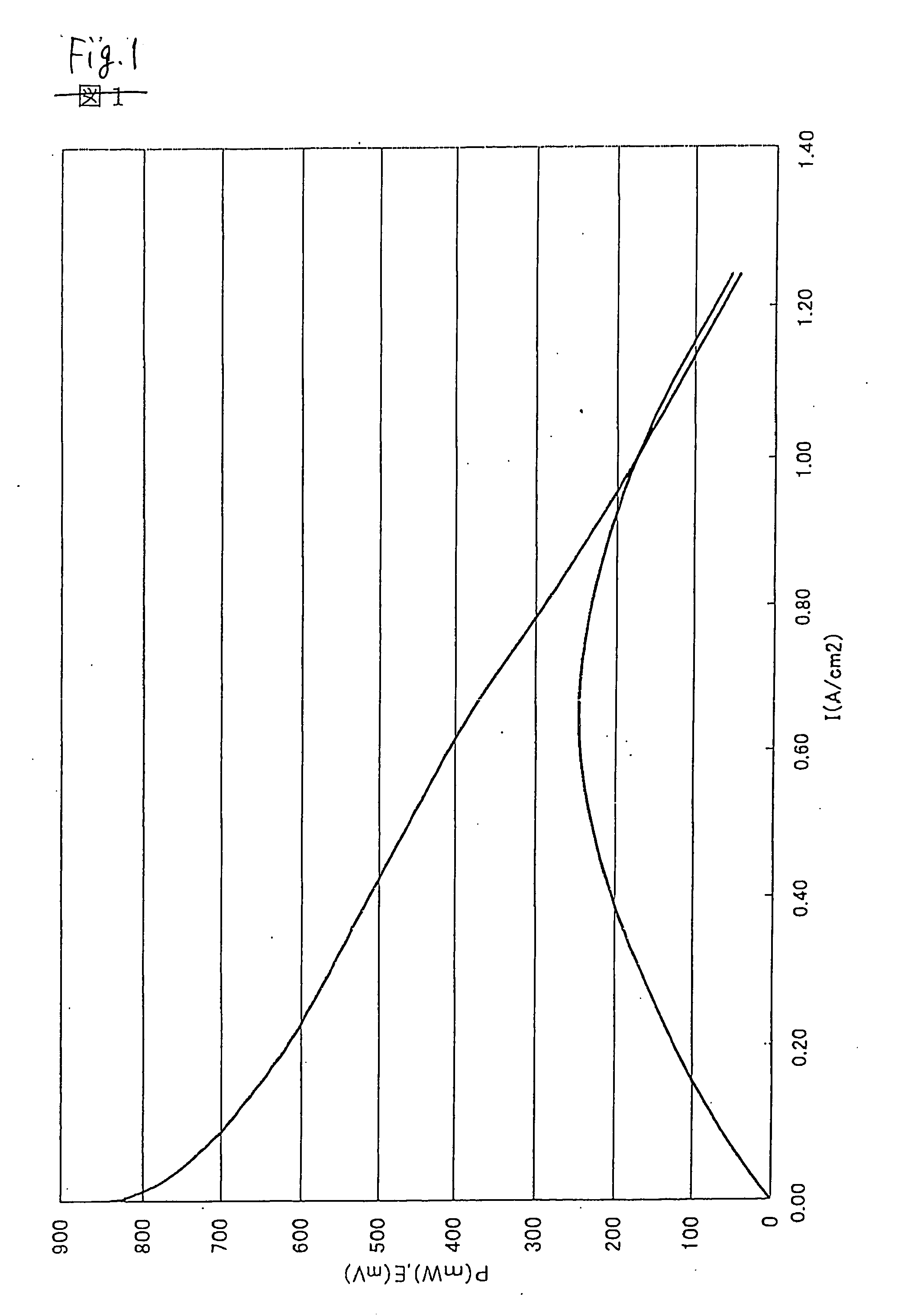Proton conducting membrane, method for producing the same and fuel cell using the same
- Summary
- Abstract
- Description
- Claims
- Application Information
AI Technical Summary
Benefits of technology
Problems solved by technology
Method used
Image
Examples
synthesis example 1
[0260] 11.1 g of 3-mercaptopropyltrimethoxysilane (produced by CHISSO CORPORATION) was dissolved in 6.0 g of methanol, 1.4 g of a 4N hydrochloric acid (prepared from a product of Wako Pure Chemical Industries, Ltd.) was added to the solution, and the mixture was then stirred over a 70° C. hot plate for 3 hours. When a cloudy liquid thus obtained was allowed to stand at room temperature, it was then divided into two layers. The upper layer (solvent, hydrochloric acid, unreacted products) was removed, and the oligomer which was the lower layer was then washed twice with methanol. 8.0 g of a mercapto group-containing oligomer (A-1) was obtained.
[0261] The molecular weight of the oligomer (A-1) was measured by GPC (Type 8020, produced by Tosoh Corporation), and the polymerization degree of the oligomer (A-1) was found to be 7.5 (molecular weight Mw in styrene equivalence: approx. 2,000).
synthesis example 2
[0262] 5.9 g of 3-mercaptopropyltrimethoxysilane and 4.6 g of tetramethoxysilane were dissolved in 3.5 g of methanol, 0.9 g of a 0.1N hydrochloric acid was added to the solution, and the mixture was then stirred at room temperature for 3 hours. Further, to the mixture was added 0.7 g of a 1% methanol solution of potassium fluoride, and the mixture was then stirred over a 70° C. hot plate for 3 hours. The liquid thus obtained was then concentrated under reduced pressure as it was to obtain a mercapto group-containing oligomer (A-2) in the form of a viscous liquid. The oligomer (A-2) had a polymerization degree of 19 and the molar ratio of mercapto group-containing alkoxysilane (C) to hydrolyzable silyl compound (D) as calculated by Si-nuclear magnetic resonance spectrum was 1:1, which is almost the same as that of the two materials charged.
synthesis example 3
[0263] A mercapto group-containing oligomer (A-3) was obtained in the same manner as in Synthesis Example 2 except that 7.9 g of 3-mercaptopropyltrimethoxysilane and 4.2 g of tetramethoxysilane instead of tetramethoxysilane were dissolved in 2.6 g of methanol and 1.0 g of a 0.1N hydrochloric acid was used. The oligomer (A-3) had a polymerization degree of 16 and (C):(D) was 2:1.
PUM
| Property | Measurement | Unit |
|---|---|---|
| Percent by mass | aaaaa | aaaaa |
| Percent by mass | aaaaa | aaaaa |
| Percent by mass | aaaaa | aaaaa |
Abstract
Description
Claims
Application Information
 Login to View More
Login to View More - R&D
- Intellectual Property
- Life Sciences
- Materials
- Tech Scout
- Unparalleled Data Quality
- Higher Quality Content
- 60% Fewer Hallucinations
Browse by: Latest US Patents, China's latest patents, Technical Efficacy Thesaurus, Application Domain, Technology Topic, Popular Technical Reports.
© 2025 PatSnap. All rights reserved.Legal|Privacy policy|Modern Slavery Act Transparency Statement|Sitemap|About US| Contact US: help@patsnap.com



